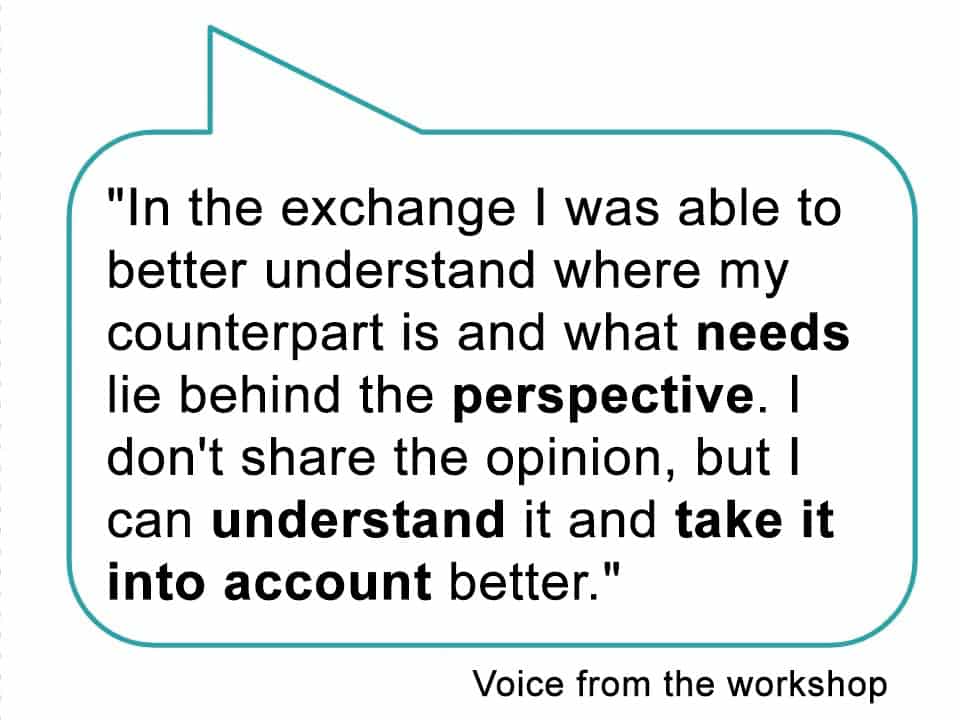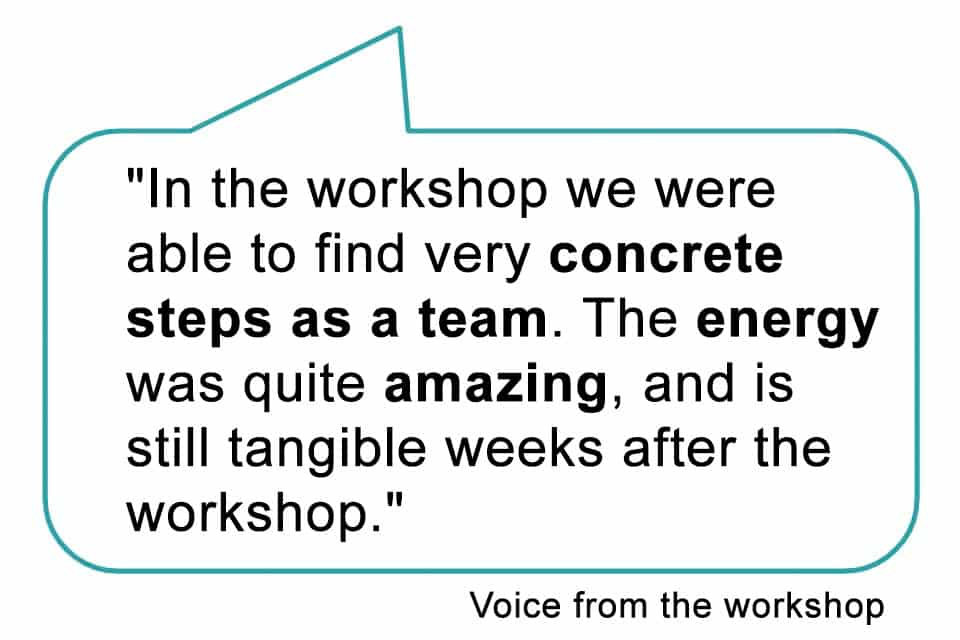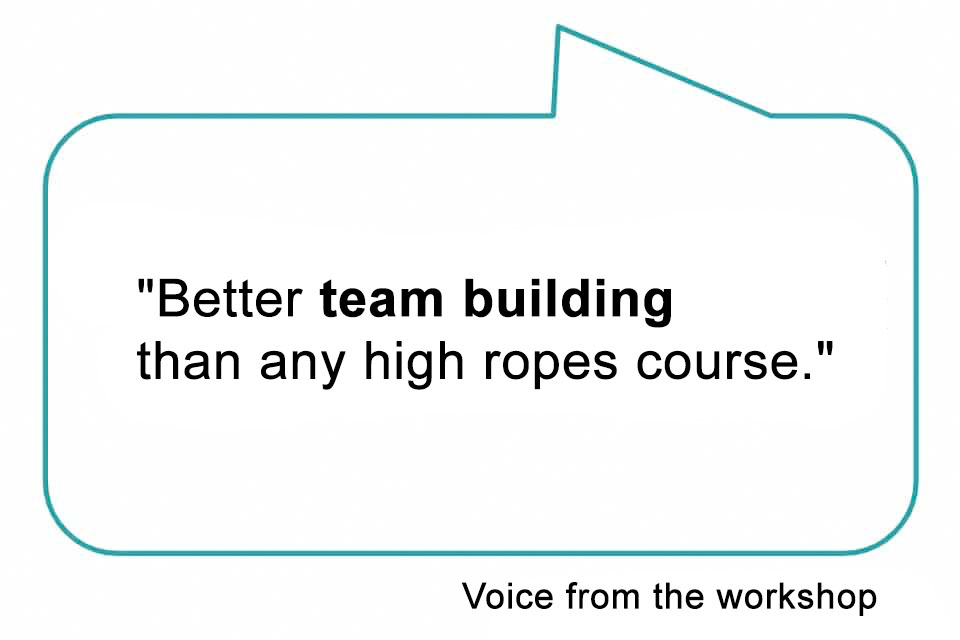Shaping the new togetherness
Now is the time to create a working relationship that can deal with change
In most of the organisations we work with, the question increasingly arises: how and above all where do we want to work together now and in the future? Different ideas and wishes collide, obviously there are no simple truths. Time for a look at different perspectives, time for a new togetherness.
Back to Campus – Do we want it and what questions does it raise?
Many who have worked virtually with their teams more often than before in the past two years have been able to sound out the advantages and disadvantages of this form of work for themselves. Some love working within their own four walls, others are happy when they can finally return to the “real” office. Not to mention the change in lifestyle: pets have been acquired, some have taken the opportunity to move to a different location and make good use of the time they would otherwise have spent stuck in rush hour traffic.
For those working in human resources, new challenges have arisen: how do we maintain a team and company culture when everyone is spread out?
Managers have to manage to stay in touch with their team and create cohesion among the members. This also includes: being productive together and achieving goals.
In a very operational sense, practical questions arise such as:
- How many more desks are needed in the office?
- How many people are served daily in the canteen or cafeteria?
- How many parking spaces are needed?
- Do we still need conference rooms at all?
- How important is internal on-site support?
The list is long and can easily be extended.
The #newnormal in the world of work
The buzzword #newnormal has long been discussed on LinkedIn and elsewhere: the (working) world has changed, companies have to adapt.
The beauty of such buzzwords is that they invite dialogue. Unfortunately, they also give the impression that there is a one-size-fits-all solution, a patent remedy for what this new normal looks like. We believe: there is not, just as with all other changes that might otherwise be called transformation, new work or restructuring. The same applies to all these changes: it is complex.
Shaping togetherness should mean taking into account and inviting the different perspectives. All these perspectives are true at the same time and there is no right and wrong. People have different needs and opinions and these must be taken into account. Because ignoring them and overruling them with fixed rules, for example, inevitably leads to frustration. Not to mention that the pandemic has shown us how flexible organisations and individuals really are. Already tomorrow, next week, or at the end of the year, the world can look different again and we can use the opportunity now to shape a togetherness that can deal with change.
Inviting everyone to shape togetherness
We work with organisations that value working together as equals. For them, it is not a matter of discussing already established rules in an alibi-like manner, but of defining honestly and directly with each other in an appreciative framework how to work together on site.
For teams, this means: How do we work together on projects and in everyday life?
For HR and personnel departments: How do we create togetherness beyond the individual teams?
For management: How do our corporate strategy, corporate culture, brand values and long-term, strategic initiatives show up in our collaboration? What do we need to support these?
And for individual employees: What do I need in my daily work and what do I want to give?
To find answers to these questions, all stakeholders should be invited to join in the discussion – whether virtually or, if space allows, on site. We like to use the following triad to consider the different facets of togetherness:
Starting point: Create clarity and understanding
Before going into the solution, it is important to first create clarity: What do I need – what do we need?
Becoming clear about one’s own needs for cooperation and listening to the perspective of others is a step that is often underestimated. Many participants only realise in this step that there are also other perspectives and assessments. This realisation and understanding of the other perspective is important for the following steps.
Developing ideas together
Building on what has just been shared: What ideas do we have for shaping togetherness and taking into account the different perspectives?
For this step, we use e.g. a 1-2-4-All as a method, i.e. let the participants think for themselves for 1 minute and take notes, then ask them to exchange ideas in pairs for two minutes and then in groups of four for four minutes. After only 15 minutes, this generates a wealth of ideas that can then be followed up.
Another structure we love, especially in physical workshops: 25/10 crowd sourcing. In a very short time, bold ideas emerge from everyone, which are then prioritised by the whole group – and with a great deal of ease.
Define next steps
In order for the ideas to be implemented directly, next steps are still needed. Voluntariness is the key.
We ask participants to grab the idea they feel like working on and discuss in small groups what needs to be done. Quite classically: who does what by when? The 15 % Solutions model of thinking helps here, focusing on what can be done immediately: “What can we do now in a very concrete way without approvals, further budget or further support?” This trick releases momentum to bring ideas into implementation.
Prepared for future changes
Involving all employees on important issues is infinitely valuable to a company. It ensures that the collective intelligence of the group is used in the search for solutions. At the same time, individual challenges and needs are taken into account. Employees are valued because their needs are heard and, incidentally, the exchange promotes understanding among each other and builds trust. All this helps companies and employees to react flexibly to future changes.
It is not difficult to start. The most important thing is to start and to go step by step together. We are convinced that the way we organise cooperation in workshops, meetings, sessions and discussions contributes significantly to creating cooperation at eye level. An initial impulse, followed by continuity and transparency, are ingredients that we consider more important than large-scale motivational programmes or incentives. Above all, they are more sustainable and more honest with employees.
Notes:
With the so-called 3-Wishes Checkout, there is a tool that helps to improve togetherness in a simple way.
Anja Kaessner and Birgit Nieschalk of Leicht- und Tiefsinn support companies with training on methodological competence with Liberating Structures, facilitation training, sparring to change meeting and work culture, coaching of “change makers” and of course facilitation of strategic meetings up to the annual general meeting where everyone is involved.
Every month, Anja and Birgit host free sessions in German where interested people can learn about Liberating Structures from a participant perspective. They also offer various workshops on Liberating Structures. It’s definitely worth a look.

Anja Kaessner
Anja Kaessner is a moderator and workshop leader. She helps teams to use the right methods to shape cooperation in a meaningful way, both virtually and face-to-face:
- light and in-depth in terms of content
- focused and strategically consistent
- for the team and involving each individual
- In short: workshops for a better world!
Anja is one of the most experienced Liberating Structures users in Germany. She is co-organiser of the Cologne Liberating Structures User Group, co-founder of the German-speaking virtual user group and the Liberating Structures User Group in Ghana.

Birgit Nieschalk
Birgit Nieschalk accompanies teams in strategic projects and moderates innovation processes. Her workshops for #EchteZusammenarbeit help companies to integrate new agile collaboration methods into their everyday work in order to solve complex problems together. In doing so, she is considered a pioneer for workshops on the topic of collaboration in virtual space.
Birgit draws her experience from 19 years of team leadership in retail and technology companies, where she was responsible for innovation, project and collaboration management. She is an experienced user and pioneer for the topic of Liberating Structures in Germany. As co-founder and co-organiser of the Liberating Structures User Groups in Cologne and North Rhine-Westphalia, she has also supported other LS user groups in their foundation.


